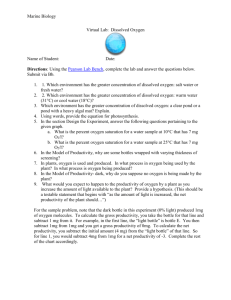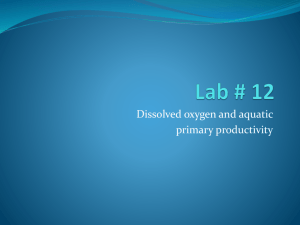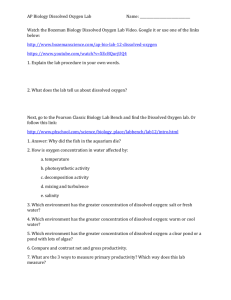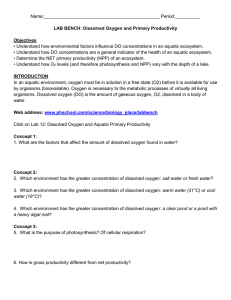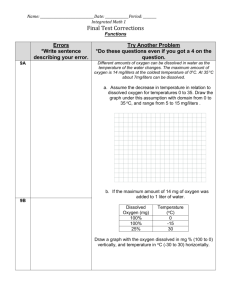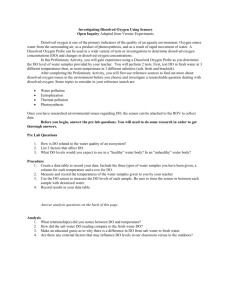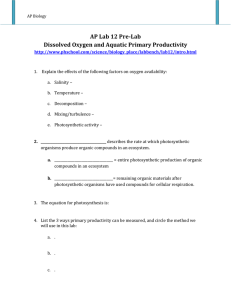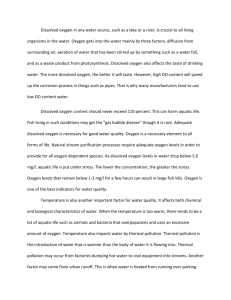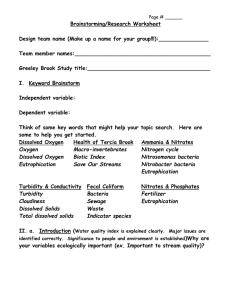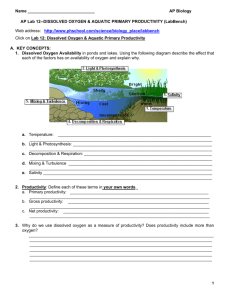Aquatic Primary Productivity Lab Worksheet
advertisement
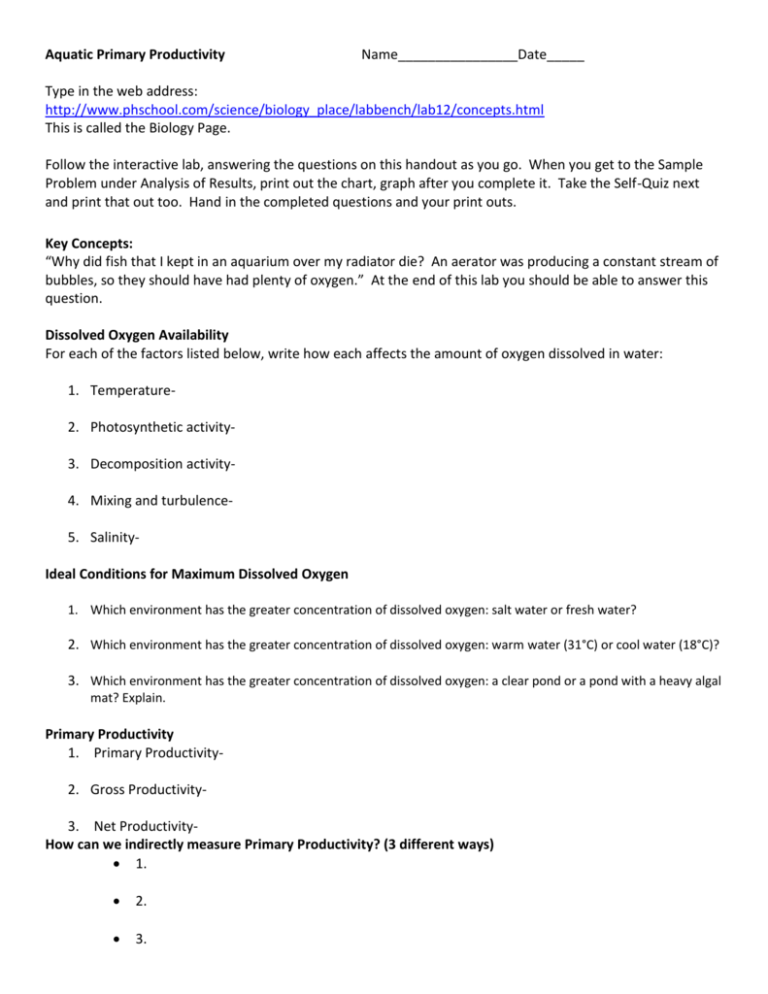
Aquatic Primary Productivity Name________________Date_____ Type in the web address: http://www.phschool.com/science/biology_place/labbench/lab12/concepts.html This is called the Biology Page. Follow the interactive lab, answering the questions on this handout as you go. When you get to the Sample Problem under Analysis of Results, print out the chart, graph after you complete it. Take the Self-Quiz next and print that out too. Hand in the completed questions and your print outs. Key Concepts: “Why did fish that I kept in an aquarium over my radiator die? An aerator was producing a constant stream of bubbles, so they should have had plenty of oxygen.” At the end of this lab you should be able to answer this question. Dissolved Oxygen Availability For each of the factors listed below, write how each affects the amount of oxygen dissolved in water: 1. Temperature2. Photosynthetic activity3. Decomposition activity4. Mixing and turbulence5. SalinityIdeal Conditions for Maximum Dissolved Oxygen 1. Which environment has the greater concentration of dissolved oxygen: salt water or fresh water? 2. Which environment has the greater concentration of dissolved oxygen: warm water (31°C) or cool water (18°C)? 3. Which environment has the greater concentration of dissolved oxygen: a clear pond or a pond with a heavy algal mat? Explain. Primary Productivity 1. Primary Productivity2. Gross Productivity3. Net ProductivityHow can we indirectly measure Primary Productivity? (3 different ways) 1. 2. 3. Measuring Primary Productivity How can primary productivity be measured in an aquatic ecosystem? To answer this question, you must first recall the equation for photosynthesis. Write the equation here: Of the three ways that Primary Productivity can be measured, which method will we be using in our lab to measure P.P.? Sample Problem A biology student inadvertently removed all the screens and labels from the water-sampling bottles before he measured the amount of dissolved oxygen. When he tested the unidentified bottles, he obtained the results shown below. The initial oxygen reading for this water was 4 mg O2/l. Based on the results predicted by the hypothesis that light increases productivity, enter the letter of the bottle that corresponds to each light percentage. Then complete the rest of the table AND graph the gross and net productivity for these data. % Light Bottle Gross Productivity Net Productivity Light Bottle-dark bottle Light Bottle-initial bottle 0 2 10 25 65 100 Graphing Hints 2. 1. Be sure to label both x- and y-axes on the graph. Place the independent variable on the x-axis and the dependent variable on the y-axis. (If you're not certain what a dependent variable or an independent variable is, check the glossary.) Be sure to mark units correctly on the graph — the interval between 2% light and 10% light is NOT the same as the interval between 10% and 25%!

